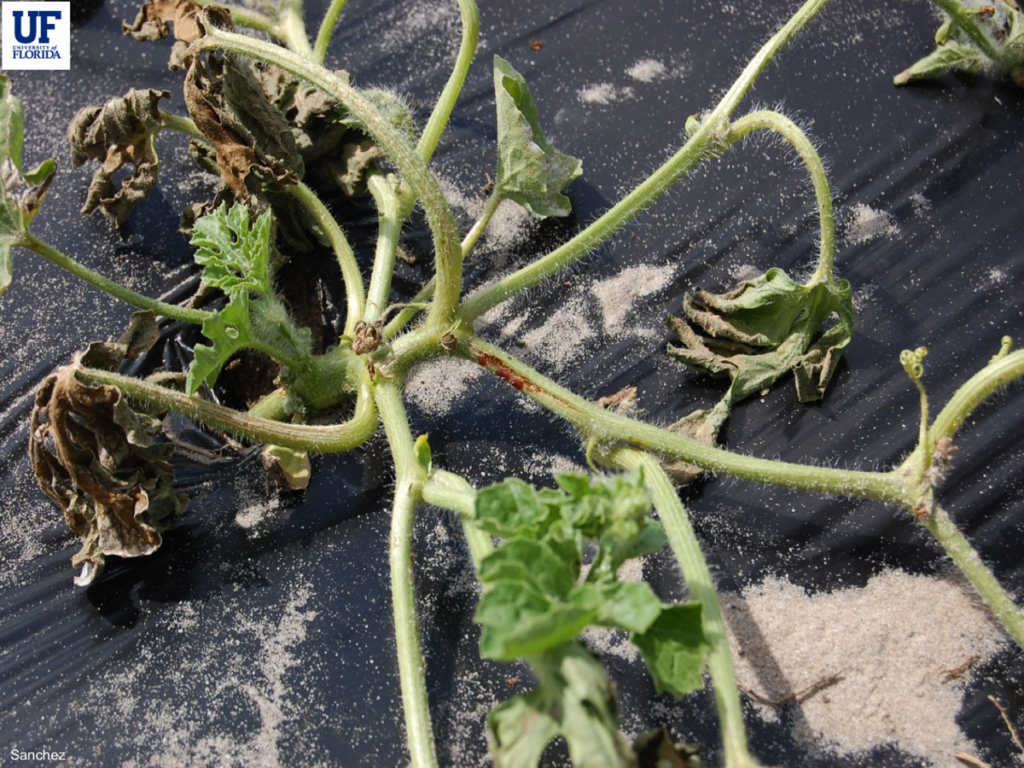By Clint Thompson
Fusarium wilt disease continues to be observed in North Florida watermelons.

Bob Hochmuth, University of Florida Institute of Food and Agricultural Sciences (UF/IFAS) Regional Specialized Extension agent in Live Oak, Florida, cautions growers against spending large amounts of money on potential remedies. They won’t be effective this late in the growing season.

“I saw some of these firsthand in 2021 with absolutely no effect on the level of control,” Hochmuth reported in his weekly email.
“There’s a lot of research going on and if we had a good silver bullet for (Fusarium wilt), we would love to share it. At this stage of the game, when you’re this far advanced in the season, your focus should be on making sure the field is taken care of as far water and fertilizer. Don’t initiate any additional stress on the plant,” Hochmuth added. “Just trying to take good care of the plants is as good as they’re going to be able to do. We do not have any curative measures at this stage of the game.”
Fusarium wilt is an annual disease where control measures, such as Proline, should be applied early in the season to be effective.
“We’re starting to see it, and it’s related to the fact that we’ve got this hot, dry weather. The stress on the plant when it starts producing fruit gets more than what the plant can take care of. They begin to succumb to the disease as it clogs the water-conducting vessels of the plant,” Hochmuth said.
Early symptoms of Fusarium wilt appear as dull gray-green leaves which wilt during the hottest time of the day. While plants recover at night, the symptoms eventually become permanent over time. Infected plants will collapse and die.
Florida, Georgia, Texas and California account for approximately 69% of U.S. watermelon production.










